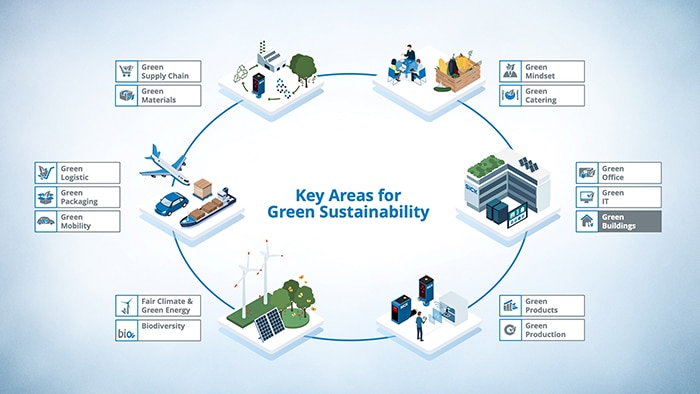Why SICK is taking action
The building sector is considered the single largest contributor to global energy consumption and greenhouse gas emissions. The decisive factors here are the environmental impact from the use phase, i.e. energy consumption, and the environmental impact of the building materials used.
Due to the long life of buildings, when constructing office buildings, warehouses and production buildings, investing in energy efficiency from the outset is essential in order to achieve the maximum positive impact on the environment. SICK places great importance on sustainable building materials in new buildings. This includes the use of renewable raw materials, such as wood instead of concrete, produced with as little energy as possible and ideally sourced locally. These factors have a decisive positive influence on the environmental footprint.
Sustainability of SICK buildings
SICK optimizes existing buildings on the one hand and all planned new buildings on the other:
An energy concept is drawn up in advance for all new buildings in order to achieve the lowest possible energy consumption. Key measures implemented based on site suitability and building use profile:
- Use of groundwater for cooling
- Concrete core activation
- Displacement ventilation as well as ventilation systems with heat recovery
- Use of daylight as well as presence- and daylight-controlled LED lighting
- Use of photovoltaics, geothermal energy and combined heat and power plants
- Measurement concept for energy monitoring and optimization
Existing buildings and the entire infrastructure are being renovated with regard to their energy efficiency. To this end, ventilation systems are being renewed, lighting standards established and automated shading systems installed, to name a few examples. To uncover potential savings, an energy measurement system records which systems or departments consume how much electricity. All findings and experiences resulting in concrete specifications are documented in a building standard. This is mandatory at SICK for all new buildings.
